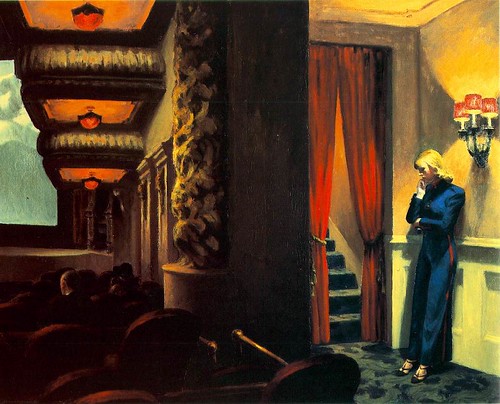Against Static
"Painting is absolute truth, and the language of truth should be learned everywhere and always. I would make painting the basis of education in all schools. This is the only language with which you can express everything." Nil Khasevych
This is my email back:
I'm reading My Name is Red, a novel set in 16th-century Turkey that propels painting to a holy act -- specifically centering around the murder of an Islamic artist who is rumoured to have incorporated European styles in his most recent paintings -- so maybe it's in reaction to that fabular elevation that I'm being cynical. Maybe I'm always cynical.
The absolute truth needs to be able to honestly represent life or, perhaps more, needs to itself be life. Truth is the strange way in which the moments of our life come together. Those confluences -- from the straightforward (your sending this email while I'm reading My Name Is Red) to the obscure (the bizarre experience of seeing a sprinkler system shoot up out of the grass and make an entirely-too-loud racket and realizing later than you should that the noise is actually a leaf blower across the street that happened to sync) -- are montage, which can be represented in painting but is best expressed by collage, pallimpsest, comics, film and music.
(I'll acknowledge here that Khasevych was not limiting "Painting is absolute truth" to physical paintings but the act of painting, creating an image using a pigment, which would include comics, collage and - keeping an open mind - film. Yes, I'm being a pedant but not for the sake of pedantry: this is a gut reaction -- a contrarian rambling that strays from the question at hand with each step -- not an indictment of the quote.)
Like life, art thrives in juxtaposition: two opposing scenes in a film intercut together; the Velvet Underground & Nico on a bookstore PA overlapping with Xmas carollers outside, ebbing and flowing as the door closes and opens; two comics panels sitting side-by-side and the unseen action that happens between the panel, in the transition, the gutter.
Maybe I'm way off. Maybe it's the critical muscle in me that wants two separate things that can be compared, contrasted, summed or separated. I don't walk around an art museum and think, damn this would be so much better if this was part of a film or a comic -- but when I actively think about it, I know that I prefer confluence and juxtaposition.
Hopper's New York Movie is the exception to everything I've written above. It's a painting that embraces the juxtaposition and confluence of life and art -- and its an image that creates in me the emotional response which I usually find outside of painting.

0 Comments:
Post a Comment
<< Home